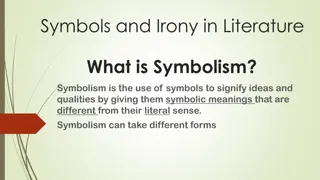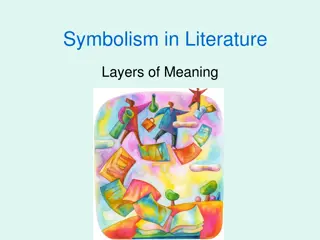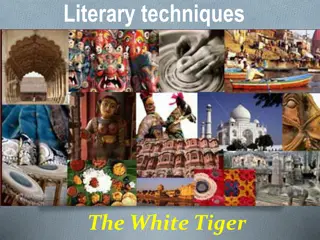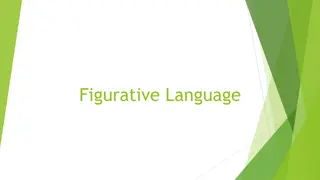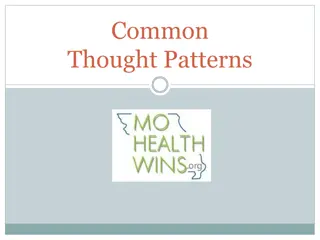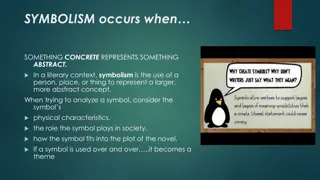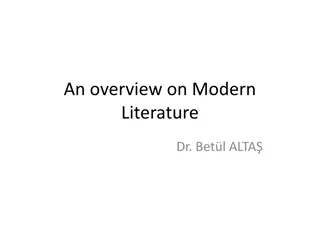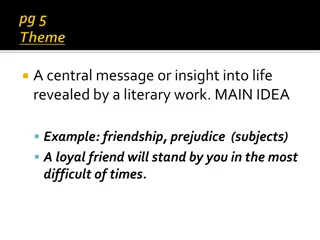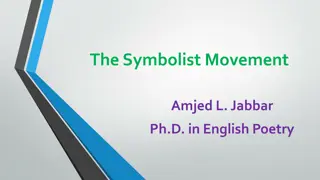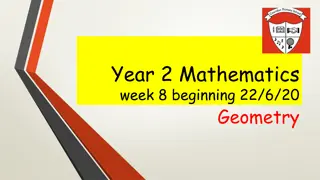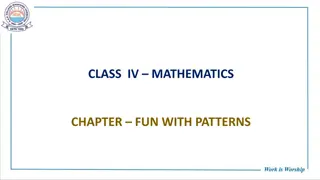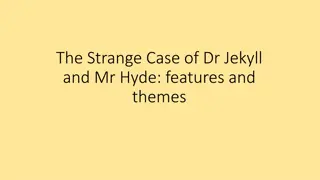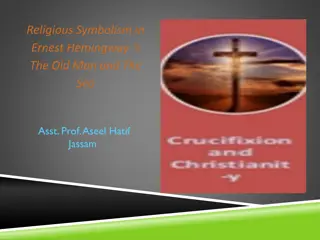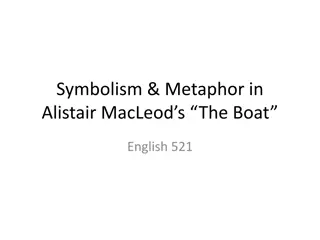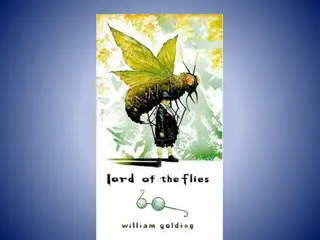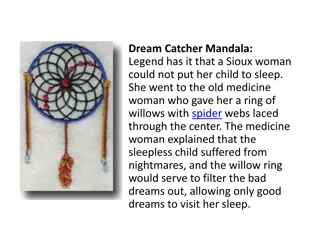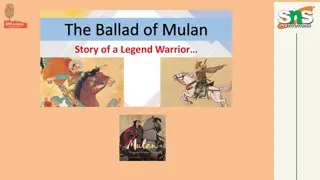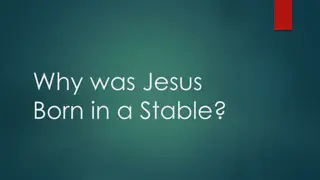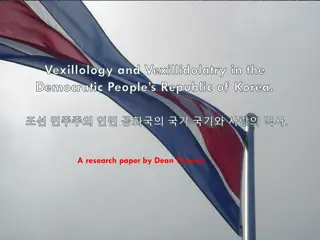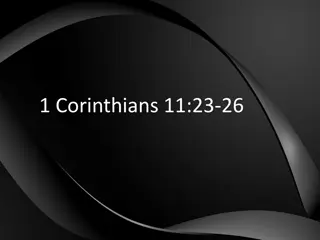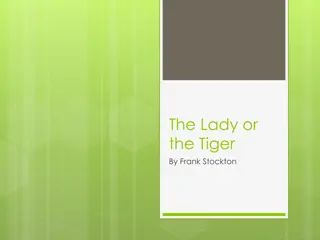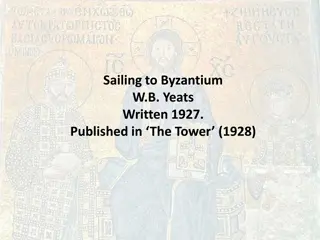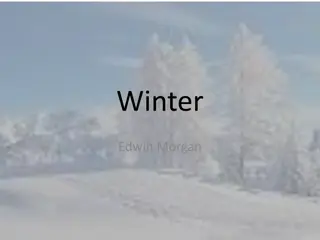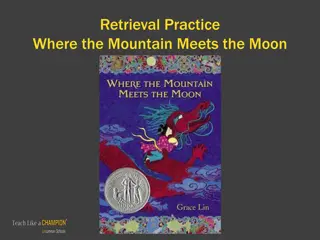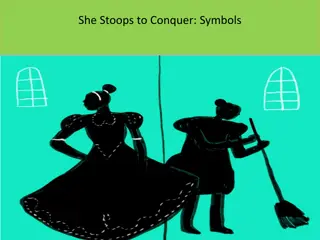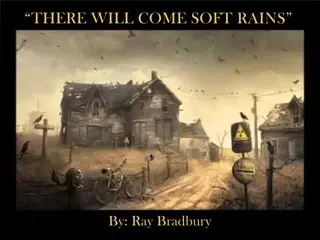Unveiling Symbolism and Patterns in Literature
Exploring the depths of literature beyond surface meanings, this collection delves into the intricate patterns and symbolism found in various elements such as colors, directions, weather, seasons, and common symbols. Gain insights into the hidden layers of storytelling and the rich tapestry of meanings woven by these literary devices.
Download Presentation

Please find below an Image/Link to download the presentation.
The content on the website is provided AS IS for your information and personal use only. It may not be sold, licensed, or shared on other websites without obtaining consent from the author. Download presentation by click this link. If you encounter any issues during the download, it is possible that the publisher has removed the file from their server.
E N D
Presentation Transcript
Patterns in Literature UNDERSTANDING LITERATURE ISN T JUST A GUESSING GAME OR THE ART OF BEAUTIFUL STRETCHING
Directions North: big cities & civilization progress and sophistication Going South: it s gonna get hot getting in trouble, exploring the wild side Go West, Young Man!: self discovery, exploration East: could be exotic and unknown, wisdom of the ancients, our roots, coming home.
Colors Red: passion and the extremes of human emotion Blood ties and bloodlust; love and rage Yellow: Sunny, happy, and bright Or jaundiced, rotted and decayed Green: greed, jealousy & envy Or Young and inexperienced, new Blue: Content and placid Or sad
Colors continued Violet: royalty Or villainy, deception Black: sophistication, regality and occasionally fertility Or darkness, ignorance, sin White: innocence, purity Or naivete and occasionally death
Weather and Seasons Spring: Youth, growth, new life, love and beginnings Rain: Cleansing or muddying; growing or destroying. Change! Water: baptism . . . Change! Summer: Adulthood/prime. Arduous or prosperous Sun: enlightenment, trial/crucible Autumn: Middle age. Harvest. Reap what you sow. Storms: foreboding, widespread change Winter: Old age. Death. Snow: cold, death, despair; grace
Common Symbols Sun or light: enlightenment, knowledge Moon: fertility and femininity Stars (especially North Star): Guidance and direction Serpents: EVIL, manipulation, corruption Blindness: perception Scars, limps, injuries, etc.: same thing inside Hands: work, what we do
Common Symbols continued Violence: personal, political, and human struggles Sex: power & rebellion Flowers: sex, fertility, prosperity Roads and journeys: the path we take in life -- discovery; decisions Eating: community and equality Numbers: 3, 7, and 12 = completion, can be holy
Allusions Are everywhere! Knowing the big three is key: Bible, Greeks, Shakespeare. Why? It creates a community with the reader and adds layers of meaning Intertextuality builds on, alters, or challenges universal themes, ideas, and archetypes. Christ figures: characters who do stuff like Jesus -- humble beginnings, walking on water, healing, teaching and most importantly: self-sacrifice.
Assignment Read Hunters in the Snow by Tobias Wolff. Create a chart of at least 7 things from the story that fit into these patterns and state what you think each means in the context of Hunters in the Snow (see Word document) Write down what you think the message is that Wolff was trying to convey through this object, description, or event.


